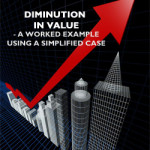At the heart of any dilapidations dispute is the appropriate meaning to attribute to the words of a repairing covenant. This paper considers, first, the process of construing repairing covenants and establishing whether a landlord or a tenant has a remedy in any given case. Secondly, the various remedies open to the parties will be considered. This paper is, as the title suggests, an overview of a particularly voluminous and complex topic. The purpose is, therefore, to provide a sketch of the various aspects of a typical dilapidations claim (whether by a landlord or a tenant), highlighting some of the issues which might require further consideration in the circumstances of a particular case.
This paper is not concerned with claims in the residential context, where the principles set out below are supplemented by statutory intervention (such as the covenants implied by section 11 of the Landlord and Tenant Act 1985).
Whilst, ultimately, it will be for a Judge to determine the disputed issues, in a dilapidations claim, much will turn on the strength of the expert evidence. In all but the most straightforward claims, experts will be engaged by both parties and it is important to ensure that the evidence supports the claim or defence to which it relates.
A full copy of this paper can be downloaded by clicking on the adjacent image.
Joint Authors: Adam Rosenthal & Joseph Ollech





Leave a Reply
You must be logged in to post a comment.